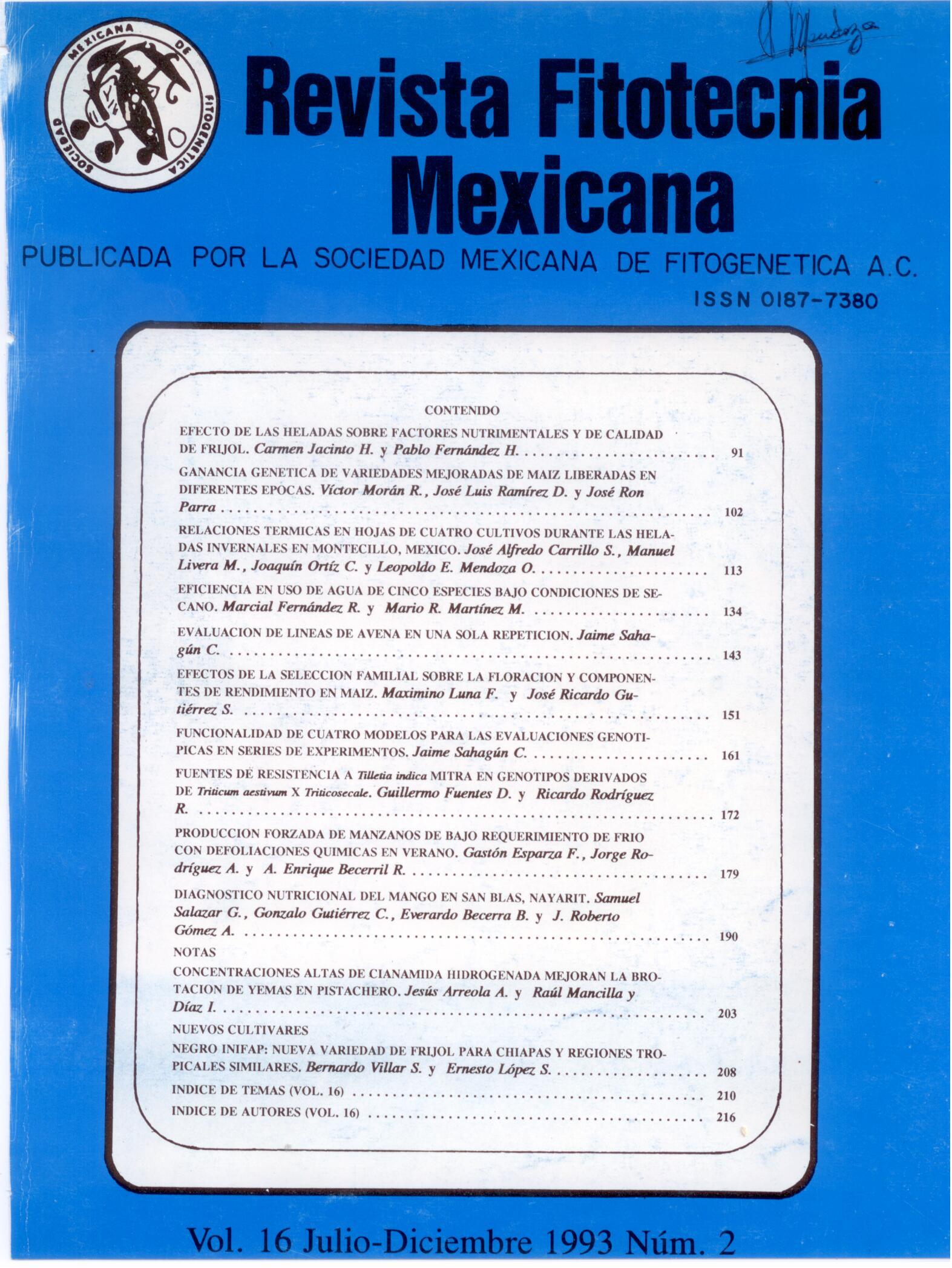GENETIC GAIN OF ~RO VED MAIZE V ARIETIES REALEASED IN DIFFERENT YEARS
Main Article Content
Abstract
Varieties of maize (Zea mays L.) for the "Bajío" Region in Mexico, released by the Instituto Nacional de Investigaciones Forestales y Agropecuarias (INIFAP) and its predecessor institutions, have been commercially grown with very good results in the central part of Jalisco state for many years. In the 1987 Spring-Summer growing season, a study under rain-fall conditions to determine the gains due to genetic improvement in grain yield and other agronomic traits was carried on. Nine hybrids and three open pollinated varieties, released during the 1955 to 1985 period, four of them were early intermediate maturity and eight intermediate-late, were evaluated, under two environmental conditions, which were different in fertilization dosage and population density. No genetic gains were observed for yield in early-intermediate varieties because the hybrid H-220 (the oldest one) and HV-313 (the newest hybrid) yielded statistically equal; however, improvement in lodging resistance and ear quality was evident. On the other hand,
genetic improvement was more clear in the intermediate-late varieties, since MIRANDA-355, the newest hybrid, overyielded the older varieties; also, it had lower lodging and better ear quality; in adition, it had closer male-female blooming and better foliar efficiency to produce grain. There was not difference between both production environments; probably due to a drought period during the grain filling stage. However, lodging and ear quality were poorer at the environment with high population density and fertilization.

